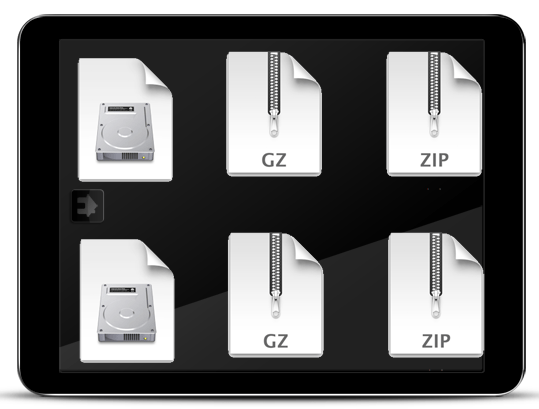
Since macOS is based on Unix there are a number of ways to compress files and folders within the filing system using Unix based application code, below are a few options using the Terminal or command line interface (cli). The default command line application interface in macOS is the Terminal and is stored in /Applications/Utilities.
File and folder compression saves on file size and ensures the contents are captured and delivered or stored as one monolithic file. A compressed file which contains files and folders is generally referred to as an archive. Here are some built-in compression applications you can use including zip, tar, gz, bz2, gz and dmg.
ZIP – Cross Platform
First up is ZIP one of the most commonly used compression techniques used across all platforms
To compress
zip -r archive_name.zip folder_to_compress
To extract
unzip archive_name.zip
If you want to make a zip without those invisible Mac resource files such as “_MACOSX” or “._Filename” and .ds store files, use the “-X” option in the command so:
zip -r -X archive_name.zip folder_to_compress
TAR.GZ – Cross Platform
Second up is TAR, an old favorite on Unix/Linux – you add the GZ for the compression – compresses tighter than zip
To compress
tar -zcvf archive_name.tar.gz folder_to_compress
To extract
tar -zxvf archive_name.tar.gz
TAR.BZ2 – Cross Platform
A variation on TAR GZ but with better compression than both tar.gz and zip.
To compress
tar -jcvf archive_name.tar.bz2 folder_to_compress
To extract
tar -jxvf archive_name.tar.bz2
GZ
Without the tar
To extract
gunzip archivename.gz
DMG – macOS Only
This one is macOSnative only – for a GUI interface use /Applications/Utilities/Disk Utility – for command line use:
To create
hdiutil create -format UDZO -srcfolder folder_to_compress archive_name.dmg
To mount
hdiutil attach archive_name.dmg
To view
ls -lah /Volumes/archive_name/
To Eject
hdiutil eject /Volumes/archive_name/
You can also use a number of different formats for creating a .dmg
- UDZO – Compressed image (default)
- UDRO – Read-only image
- UDBZ – Better compressed image
- UDRW – Read/Write image
- UDTO – DVD disk image
That’s the low down, the more common compression packages available will typically be covered in one of the above.










2 comments
Verity
Thank you for explaining the hdiutil options. About the line “UDBZ – Better compressed image”, I checked the options with “$ hdiutil create -help” and saw that the UDBZ is deprecated. Would you still use it?
I checked all 5 folder compression options and UDBZ generates by far the smallest disk image, but are those images going to not work in the future if this format is deprecated?
In my testing, the default UDZO created the largest disk images so it’s the last option I would use.
Level of compression of a folder with audio files:
UDBZ 4.7% (slow)
ULMO 4.3%
ULFO 3.8% (fastest)
UDCO 3.7%
UDZO 2.9% (default)
$ hdiutil create -help
…
Image from Folder options:
…
-format [UDZO]
…
UDCO – compressed (ADC)
UDZO – compressed
UDBZ – compressed (bzip2), deprecated
ULFO – compressed (lzfse)
ULMO – compressed (lzma)
Stef
Thank you! Been looking for exactly this!